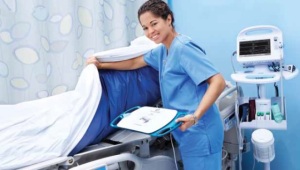by
Lauren Dubinsky, Senior Reporter | May 21, 2014
From the May 2014 issue of HealthCare Business News magazine
At the time that Florence Nightingale founded modern nursing in the mid- 1800s, nurses would measure and manually record blood pressure every few hours with large, bulky instruments. But more than 150 years later, hospitals are increasingly looking for solutions to continuously and noninvasively monitor patients’ vital sign measurements in low-acuity areas, or areas with non-critical patients.
“We can stop the Florence Nightingale approach to nursing, which is sending nurses every two to four hours to check the vital signs on all these patients,” says Gary Manning, vice president of global sales and marketing development at Sotera Wireless. “With the ability to monitor all vital signs continuously we can eliminate that step, therefore freeing up more time for the nurse to be involved in more of the information.”
But nurses are not the only ones who benefit. Hospitals can avoid costly ICU transfers and long hospital stays, and patients can find satisfaction with the better outcomes and shorter stays. Naturally, manufacturers have picked up on this interest and created their own unique solutions.



Ad Statistics
Times Displayed: 1227
Times Visited: 6 Fast-moving cardiac structures have a big impact on imaging. Fujifilm’s SCENARIA View premium performance CT brings solutions to address motion in Coronary CTA while delivering unique dose saving and workflow increasing benefits.
Show me the evidence
ECRI Institute has noticed this interest over the past year after an increasing number of hospitals requested information about the technology. “A lot of them are interested in introducing continuous monitoring solutions in care areas previously covered by nurses conducting spot checks with vital signs monitors,” says Timothy Wong, project engineer of the health devices group at ECRI.
Patients in low-acuity areas traditionally involve the nurses checking the patients’ vitals every few minutes or hours depending on facility protocol and the patient’s acuity. But deterioration can occur between checks and lead to an ICU transfer.
“We traditionally have seen cases in which a particular patient’s decline was not detected until the patient was quite sick, or in rare cases, could not be revived — there was a suspicion that if we had more information about this patient they might have been caught earlier,” says Erin Sparnon, engineering manager of the health devices group at ECRI.
CMS data from Medicare patient discharge records between 2005 and 2007 showed that respiratory failure and the failure to prevent deterioration were two of the three medical indicators that accounted for 26 percent of the 97,755 reported deaths and over $1.82 billion in excess Medicare costs.
A Vanderbilt University Medical Center study published in 2010 evaluated continuous vital sign monitoring of post-surgical hospital patients. Over the two-year controlled study, 1,270 patients were evaluated. Results showed an 85 percent reduction of unplanned ICU transfers and a 69 percent reduction of unplanned step-down unit transfers for the patients in the study versus non-study patients on the same floors during the same time period.

